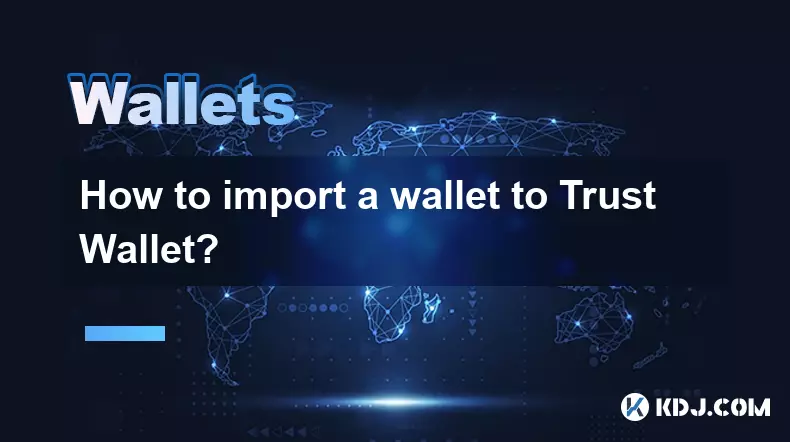-
 Bitcoin
Bitcoin $112400
0.86% -
 Ethereum
Ethereum $4509
-0.37% -
 XRP
XRP $2.968
-0.52% -
 Tether USDt
Tether USDt $0.9999
-0.02% -
 BNB
BNB $876.4
2.10% -
 Solana
Solana $214.3
4.69% -
 USDC
USDC $0.9998
-0.01% -
 Dogecoin
Dogecoin $0.2241
1.86% -
 TRON
TRON $0.3447
-0.45% -
 Cardano
Cardano $0.8586
0.25% -
 Chainlink
Chainlink $25.26
5.76% -
 Hyperliquid
Hyperliquid $45.95
-3.38% -
 Ethena USDe
Ethena USDe $1.001
-0.01% -
 Sui
Sui $3.491
0.92% -
 Stellar
Stellar $0.3830
0.57% -
 Cronos
Cronos $0.3333
27.15% -
 Bitcoin Cash
Bitcoin Cash $557.0
0.74% -
 Avalanche
Avalanche $24.75
0.77% -
 Hedera
Hedera $0.2406
0.46% -
 UNUS SED LEO
UNUS SED LEO $9.561
-0.08% -
 Litecoin
Litecoin $113.8
0.74% -
 Toncoin
Toncoin $3.187
1.26% -
 Shiba Inu
Shiba Inu $0.00001264
0.86% -
 Polkadot
Polkadot $3.995
3.37% -
 Uniswap
Uniswap $10.04
1.61% -
 Dai
Dai $0.9999
-0.01% -
 Bitget Token
Bitget Token $4.603
-0.87% -
 Monero
Monero $269.4
-1.07% -
 Aave
Aave $317.5
-1.55% -
 Ethena
Ethena $0.6731
10.25%
How to import a wallet to Trust Wallet?
Trust Wallet lets you securely import wallets using a seed phrase or private key, supporting multiple blockchains while keeping your keys encrypted on-device.
Aug 29, 2025 at 08:43 am

Understanding Wallet Importation in Trust Wallet
1. Trust Wallet allows users to import existing cryptocurrency wallets by using a seed phrase or private key. This feature is essential for those who already manage digital assets through other platforms and wish to consolidate control within Trust Wallet. The application supports a wide range of blockchains, including Ethereum, Binance Smart Chain, Bitcoin, and many decentralized token standards.
2. Before initiating the import process, ensure that the wallet you are transferring from is compatible with Trust Wallet’s supported networks. Mismatched networks could result in irreversible loss of funds. Always verify the blockchain and token standards associated with your assets prior to migration.
3. The most common method of importing a wallet involves the 12- or 24-word recovery phrase. This phrase acts as the master key to all accounts generated under it. Entering it correctly into Trust Wallet will restore access to all associated addresses and balances.
4. Another method involves importing via private key, typically used for individual addresses rather than entire wallets. This option is suitable for users managing isolated holdings across different platforms or cold storage solutions.
5. During the import process, Trust Wallet does not transmit your seed phrase or private key to any external server. All data remains encrypted and stored locally on your device, maintaining the non-custodial nature of the wallet.
Step-by-Step Guide to Importing a Wallet
1. Open the Trust Wallet application and tap on “Import Wallet” when setting up a new profile or navigate to settings and select “+ Add Wallet” if already logged in.
2. Choose the import method: either “Recovery Phrase” or “Private Key.” Input the exact sequence of words or characters as they appear in your original wallet’s backup. Pay close attention to spelling, spacing, and word order—any deviation will prevent successful restoration.
3. Select the cryptocurrency or network associated with the imported credentials. Trust Wallet will automatically detect available balances once the correct network is chosen and synced.
4. Confirm the displayed addresses match those from your previous wallet. Cross-checking public addresses on a blockchain explorer adds an extra layer of verification and security.
5. After successful import, consider renaming the wallet for easier identification, especially if managing multiple accounts. This helps avoid confusion during transactions.
Security Measures During Wallet Import
1. Never enter your seed phrase or private key on any website or third-party application. Trust Wallet will never ask for this information outside the app interface. Phishing attempts often mimic legitimate processes to steal credentials.
2. Ensure your device is free of malware before entering sensitive data. Use trusted sources to download the official Trust Wallet app—avoid sideloading from unofficial app stores or links.
3. Disable screen recording and screenshots during the import process. Some devices automatically capture images when entering text, which could expose your recovery phrase if the device is compromised.
4. After import, enable biometric authentication (fingerprint or face recognition) within Trust Wallet settings to add an additional layer of protection against unauthorized access.
5. Store the original backup of your seed phrase offline, preferably in a secure physical location such as a fireproof safe. Digital copies increase the risk of exposure.
Managing Imported Assets
1. Once imported, all supported tokens under the same network will appear automatically. For custom tokens not visible by default, manually add them using their contract address, symbol, and decimal count.
2. Use the built-in DApp browser to interact with decentralized applications directly from the wallet. This includes staking, swapping tokens, and providing liquidity without leaving the app environment.
3. Monitor transaction history and real-time balance updates through the main dashboard. Each network maintains a separate transaction log, allowing clear tracking of activity per blockchain.
4. When sending funds, double-check recipient addresses and network compatibility. Sending assets to an incorrect chain (e.g., ERC-20 tokens to a BEP-2 address) typically results in permanent loss.
5. Regularly update the Trust Wallet app to benefit from security patches, new token listings, and improved interface features that enhance usability and protection.
Frequently Asked Questions
Can I import a hardware wallet into Trust Wallet?Trust Wallet does not support direct integration with hardware wallets like Ledger or Trezor. It functions as a software wallet only, meaning private keys are stored on the mobile device. However, you can manually transfer funds from a hardware wallet by sending them to the Trust Wallet address.
What happens if I lose my phone after importing a wallet?If you have securely backed up your seed phrase, you can restore access to your wallet on another device using the same import process. Without the recovery phrase, the assets cannot be retrieved.
Is it safe to import a wallet with active staking positions?Importing a wallet does not affect ongoing staking contracts on decentralized platforms. The staked assets remain bound to the original addresses, and rewards continue to accrue as long as the network rules are followed.
Can I import the same wallet into multiple devices?Yes, the same seed phrase can be used to import the wallet on multiple devices. However, each instance shares the same private keys, so compromising one device risks the entire wallet’s security.
Disclaimer:info@kdj.com
The information provided is not trading advice. kdj.com does not assume any responsibility for any investments made based on the information provided in this article. Cryptocurrencies are highly volatile and it is highly recommended that you invest with caution after thorough research!
If you believe that the content used on this website infringes your copyright, please contact us immediately (info@kdj.com) and we will delete it promptly.
- Bitcoin Price Prediction: Institutional Wave Meets Reality Check, Says Research Firm
- 2025-08-29 15:30:16
- US ETFs, Bitcoin, and Spot Trading: A New Era?
- 2025-08-29 15:05:13
- Ethereum, X Layer, and OKX's Big Bet: What's the Buzz?
- 2025-08-29 15:30:16
- Ethereum: Wall Street's Token of Choice?
- 2025-08-29 12:45:13
- Cryptos with Massive Upside: Top Buys to Watch Now
- 2025-08-29 13:05:15
- BlockDAG's Presale Momentum: Is a 36x ROI Realistic?
- 2025-08-29 13:25:14
Related knowledge

How to use Trust Wallet's built-in DEX?
Aug 29,2025 at 07:28am
Understanding Trust Wallet’s Built-in DEX1. Trust Wallet integrates a decentralized exchange (DEX) directly within its mobile application, allowing us...

How to avoid slippage when swapping on Trust Wallet?
Aug 29,2025 at 03:01am
Understanding Slippage in Decentralized Exchanges1. Slippage occurs when the price of a cryptocurrency changes between the time a transaction is initi...

How to interact with smart contracts on Trust Wallet?
Aug 29,2025 at 01:28am
Understanding Smart Contracts and Trust Wallet Compatibility1. Smart contracts are self-executing agreements with the terms directly written into code...

How to change the currency displayed in Trust Wallet?
Aug 29,2025 at 02:42am
Understanding Currency Display in Trust Wallet1. Trust Wallet allows users to manage multiple cryptocurrencies and tokens within a single interface. T...

How to set a custom nonce in Trust Wallet?
Aug 29,2025 at 03:29am
Understanding Nonce in Ethereum Transactions1. The nonce is a critical component in Ethereum-based transactions, representing a sequential counter tha...

How to use Trust Wallet with Ledger?
Aug 29,2025 at 06:42am
Connecting Trust Wallet with Ledger: A Secure Approach1. Trust Wallet and Ledger integration allows users to manage their cryptocurrency assets with e...

How to use Trust Wallet's built-in DEX?
Aug 29,2025 at 07:28am
Understanding Trust Wallet’s Built-in DEX1. Trust Wallet integrates a decentralized exchange (DEX) directly within its mobile application, allowing us...

How to avoid slippage when swapping on Trust Wallet?
Aug 29,2025 at 03:01am
Understanding Slippage in Decentralized Exchanges1. Slippage occurs when the price of a cryptocurrency changes between the time a transaction is initi...

How to interact with smart contracts on Trust Wallet?
Aug 29,2025 at 01:28am
Understanding Smart Contracts and Trust Wallet Compatibility1. Smart contracts are self-executing agreements with the terms directly written into code...

How to change the currency displayed in Trust Wallet?
Aug 29,2025 at 02:42am
Understanding Currency Display in Trust Wallet1. Trust Wallet allows users to manage multiple cryptocurrencies and tokens within a single interface. T...

How to set a custom nonce in Trust Wallet?
Aug 29,2025 at 03:29am
Understanding Nonce in Ethereum Transactions1. The nonce is a critical component in Ethereum-based transactions, representing a sequential counter tha...

How to use Trust Wallet with Ledger?
Aug 29,2025 at 06:42am
Connecting Trust Wallet with Ledger: A Secure Approach1. Trust Wallet and Ledger integration allows users to manage their cryptocurrency assets with e...
See all articles

























































































